Avalon
| Other Names: | Date of Sinking: September 16, 1964 | |||
| Rig/Type: Passenger Steam Ship | Cause of Sinking: Foundered in storm | |||
| Length: 269' | Breadth: 38' | Tons: 1,985 | Cargo: None | |
| Built: Globe Iron Works of Cleveland, Ohio in May 1891 | Location: Off Palos Verdes | |||
| Hull Construction: Steel | Depth: 75' | Visibility: 20+' | ||
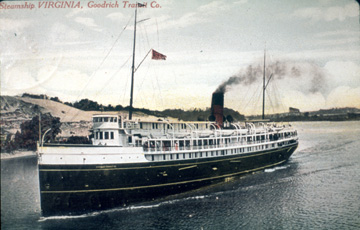
Launched as the S.S. Virginia, the passenger ship carried passengers between Chicago and Milwaukee. In 1918, she was requisition by the Navy for use in the first world war and renamed the U.S.S. Blueridge. However, to get her through the St. Lawrence River locks, her bow and 6 feet of her stern had to be cut off and later reassembled.
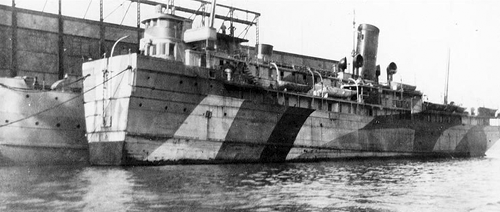
The U.S.S. Blueridge, 1918
While waiting for orders in Boston harbor, the Navy finally decided she was no longer needed and she was sold as surplus to William Wrigley, owner of the famous chewing gum company and Catalina Island.
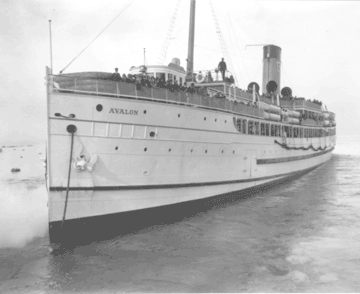
The Avalon as she appeared in February of 1924.
The ship was renamed Avalon and was sent from New York via the Panama Canal, arriving April 5, 1920 and moored at the Catalina Terminal. However, her debut would not take place until the arrival of William Wrigley Jr. On April 15, 1920, the Avalon left on her first trip to Catalina, taking her full capacity of 3,000 people. A big fanfare was planned for the new "Queen of the Channel," including a 32 piece orchestra. The Avalon was dressed up with silk flags and 150 guests were invited for the trip, including members of the Banning family, Santa Catalina Island Company and newspaper reporters. The million dollar ship featured staterooms, four cabins with private baths, two mahogany and mirror trimmed ballrooms, electric ventilation. Powered by two triple expansion steam engines, each producing 1500 power, the ship could cruise at 16 knots. The Avalon tied up to the Catalina terminal, at the foot of a Canal street that ran through Los Angeles. At some point in time around 1921, the ship's name was bestowed upon Canal street and changed to Avalon Blvd.
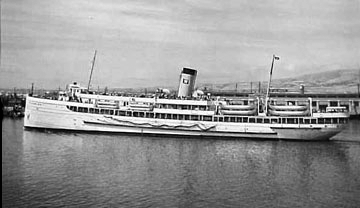
The Avalon with the "W" ensign (for Wrigley) on her stack.
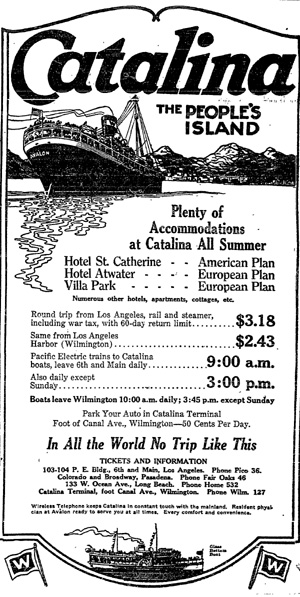
When the second world war broke out, the Avalon was again requisitioned by the government and ultimately returned to her owners after the war. Finally, in 1951, she was retired and laid up. On January 22, 1960 she was sold to Everett Stotts for scrap and her machinery and most of her superstructure was removed. She was again sold to Norman Ream in June and on July 18, a fire gutted what remained of the ship. Both the Coast Guard and Long Beach fire boats poured in tons of water into the smoldering hulk, causing it to take on a list. In September, Alvin Kidman, James and Jerry Kryda and James Adams purchased the hull. The hulk was left moored in the harbor and was condemned as a hazard to navigation and moved to Redondo Beach. By then, it had been cut down near the water line and a large crane was mounted on its stern. It is rumored to have been used to salvage the wreck of the Dominator, wrecked off Pt. Vicente.
During a storm on September 16, 1964, her anchor chain broke and she foundered, coming to rest on the bottom 70' below.
Diving the Avalon
The years of immersion have reduced the hull of the Avalon to a very low profile with only a few small sections of the wreck remaining upright and intact. As the wreck lies near a series of ridges that make up a rocky reef, finding the wreck using a fathometer can be difficult without exacting coordinates.
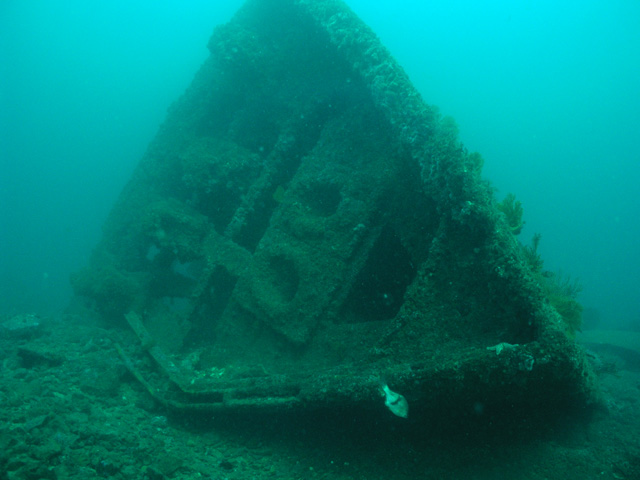
Bow of the Avalon (courtesy Jim Lyle)
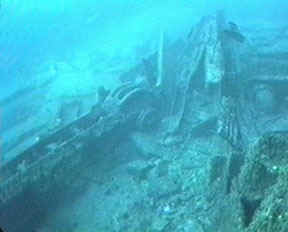 |
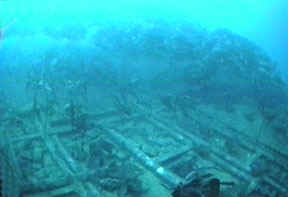 |
| The crane boom of the Avalon, seen on the left. |
Some of the lower hull rests flat on the bottom while a school of fish swim overhead. |
The wreck has light growth and since it sits on a rocky bottom, only a few pieces have become buried. However, visibility is usually mediocre at best, averaging 15-20'.
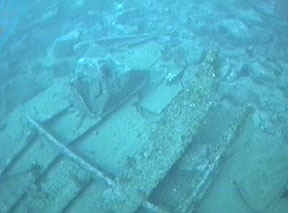 |
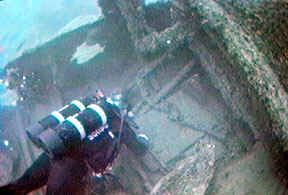 |
|
The wreckage remains largely free of growth and silt, partially due to the rocky bottom (note the rocks in the background). |
A diver inspects the wreck up close. |
Over the years, divers have discovered many relics from the Avalon and some from Dominator that were on board a the time of its sinking. Given its proximity to the rich kelp forests of Pt. Vicente, the wreck is host to bountiful game, especially lobsters.
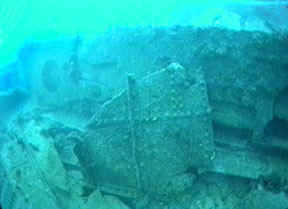 |
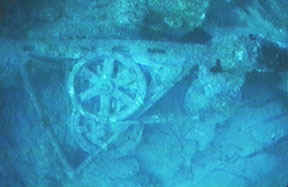 |
| Large pieces of the hull can be seen strewn about. |
These wheels are some of the few pieces of machinery that remain. |
| Like to learn more about this wreck? Visit our Guest Page to submit your inquiry. |
